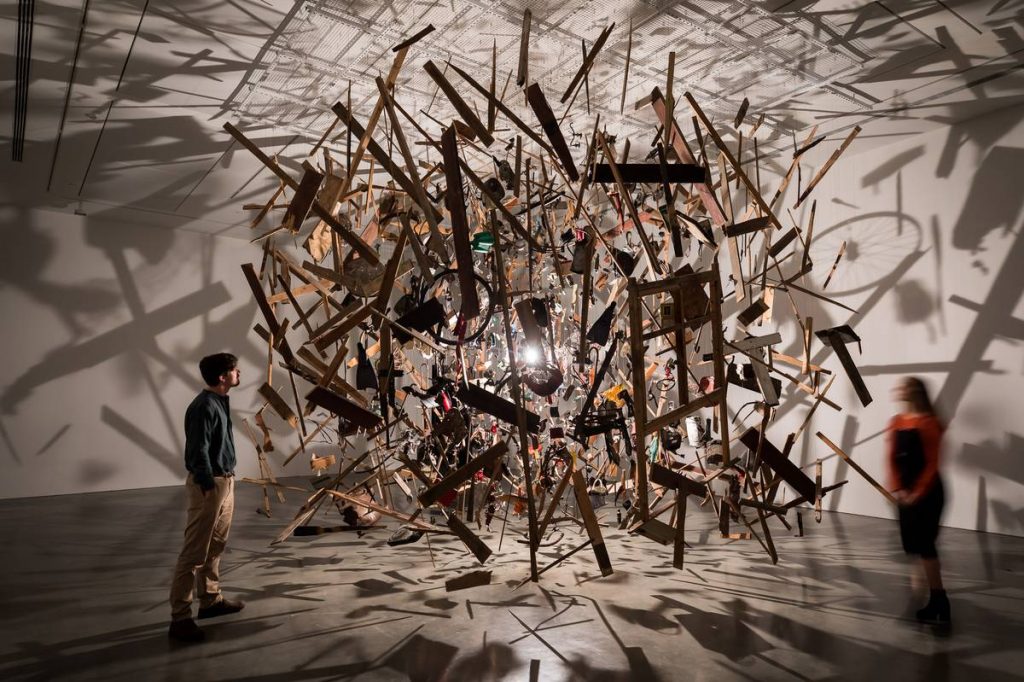British sculptor and installation artist, Cornelia Parker, is interested in the huge potential of various materials and chooses to display them as if they are frozen in time. From dark, haunting imagery to towering installations, this is her story.
Cornelia Parker has captured the international art world’s attention for nearly three decades. By taking ordinary things like objects we see in daily life, she transfigures them into these extraordinary and haunting ways.
Parker is known to continuously question the world we live in, challenging how we see things and experience life through the power of our most precious sense of sight. Growing up in the countryside of Cheshire, England, Parker grew up in a challenging family environment. With a mentally ill mother and a verbally abusive father, the quiet, reserved child at the time worked her way through her childhood, helping out on the farm as best she could.

One of the reasons she chose to go to art school is because she felt like the art world gave her a chance to be free, play, and express herself. Parker’s art is about destruction, resurrection and reconfiguration. Demonstrating the importance of process, she frequently transforms objects by using seemingly violent techniques such as shooting, exploding, squashing, cutting and burning.

One of Parker’s most famous works is Dark Matter from 1991, where she convinced the British army to blow up a garden shed. She picked up piece by piece and hung each splintered piece of wood and frame from the ceiling to recreate a diagram of an explosion captured in time.
At age 65, Parker continues to be driven by curiosity in our rapidly changing world. She may look like a sweet innocent woman from the outside, but what’s running through her veins and beating in her heart is ideas packed full of dark matter and detonations to drone-shot footage of the Commons Chamber.

However, the destruction of spaces and objects central to her method and her poetic, delicate installations have been hugely influential and memorable.


